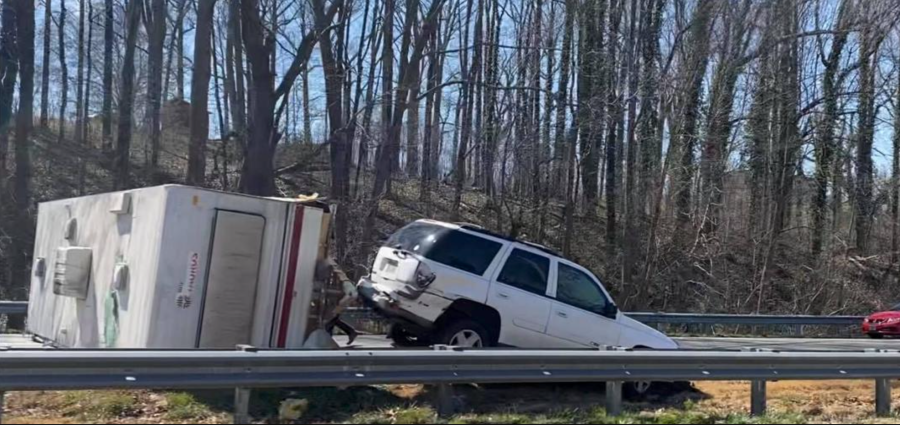
Don’t Flip Your RV on I-40 Like This Guy Did
A man is lucky to walk away without any injuries after flipping his RV on interstate 40. But the same can’t be said for his SUV or RV. He also got slapped with a nasty fine and had to explain to his wife that he wrecked her Chevy Trailblazer.
Don’t flip your RV
According to Morganton News, Roy Cooke, a 63-year-old man from Hildebran, North Carolina, barely made it half a mile on Interstate 40 before losing control of his RV. He was driving an older Chevy Trailblazer and hauling a 29-foot camper around Exit 104.
When Roy lost control of the SUV, he ran off the road toward the right, hit a guardrail, and rolled. The camper ended up on its side, blocking both lanes of eastbound I-40. The road was closed for about 45 minutes while traffic backed up for miles.

Cooke was charged with the failure to maintain lane control. But he also mentioned that the Chevy Trailblazer was a recent birthday present for his wife. He was only using it to buy the camper to use for storage. So, he may have gotten in more trouble at home. You don’t mess with your woman’s ride!
But on a serious note, Roy Cooke is lucky to walk away without any injuries. The wreck could have been much worse, especially if other vehicles hit him. First responders and Burke County REACT quickly responded to the scene.
RV tips for beginners
It sounds like Roy Cooke may have been a beginner when it comes to towing RVs. He was only using it for storage, not trips. Plus, he wasn’t using his own truck or SUV to pull it. Trailers that semi-trucks pull are often 28-feet long, the same length as the camper that flipped.
However, truckers go to school for six weeks to earn their CDL. Then they often spend time with trainers learning how to control their massive vehicles before pulling trailers on their own. But you can buy a camper and start hauling it right away.
Inexperienced RV drivers can be dangerous. According to Camper Report, it’s best to take your time and be patient in the beginning. Find an empty parking lot to practice driving. Try turning and parking. Adjust your mirrors to see the rear of your camper at all times.
Watch the weather. If you travel across state lines and hit a sudden rain or snowstorm, conditions could get slippery in the blink of an eye. Also, know your limits. Know how tall your RV is before going under a bridge or through a tunnel. Know how heavy it is before going over bridges.
How to drive your RV on the interstate
Interstate I-40 is full of steep, sharp curves as it carves through the mountains. It’s really an advanced place for RVers to travel. Don’t drive tired. Driving tired is the equivalent of driving drunk. Be alert and pay attention to the road.
Be courteous and let smaller vehicles go around you. Use your turn signal in advance and slowly move over. You won’t be able to brake and make turns or exits as fast. Also, go slow, but not too slow.

Sticking to about 63 mph is pretty safe. But stay in the right lane. This will prevent you from blocking traffic that wants to go around you. Plus, you’ll be able to pull over on the shoulder if you experience a mechanical issue and reach exit ramps more easily.
Know when to use your brakes. The heavier a vehicle is, the harder it is to stop. Give yourself more time in advance to slow down and stop. Stay about 400 to 500 feet behind the vehicle in front of you. Also, measure your tail swing. Reference a white line in an empty parking lot to determine how far your RV swings out while you turn to avoid hitting obstacles on the road.



